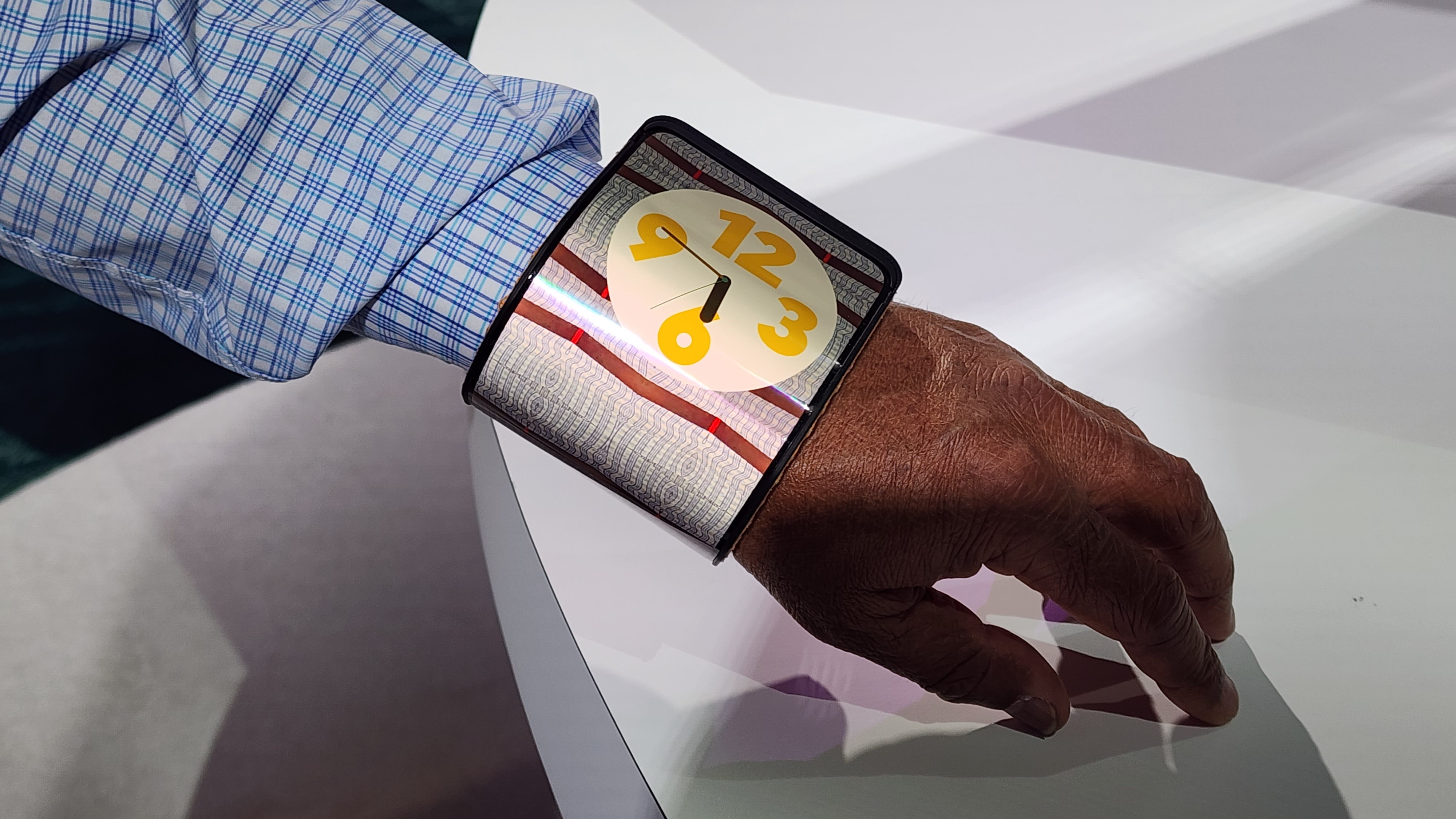5 biggest takeaways from Lenovo Tech World 2023 — bendable adaptable displays, 3D monitors and AI galore
Lenovo Tech World was a tech nerd’s playground

This week, I headed to Austin for Lenovo Tech World — the tech giant’s major annual event. Unsurprisingly, the theme was AI, AI and more AI. No, seriously, the tagline was literally “AI for All.”
Now, Lenovo's focus is spread across enterprise, consumer electronics, and tech, so a lot of what was discussed was business-facing. That means you may not ever use it, though it may end up improving your lives in other ways, such as Lenovo’s AI retail efforts that focus on reducing product loss for grocery stores through AI.
But there was still plenty that you will be able to get into your hands, and some of it you already can. So here are my five biggest takeaways from Lenovo Tech World, from AI in phones and laptops to bendable phone displays and more.
Lenovo wants to put its AI in its products as a selling point
Despite promising “AI for All,” that doesn’t mean Lenovo was going to give you every AI tool imaginable. Instead, the company's decided to strategically focus on what it calls “Hybrid AI.” These Hybrid AI take an existing public AI large language model (LLM) — Lenovo calls these foundational models — and combine it with personal data on your smartphone, laptop or PC.

Lenovo calls this AI assistant your Personal AI Twin on PCs and laptops, and MotoAI on its Motorola phones. They take information from the internet and public AI models and adds your personal data into the mix, but not the other way around.
This means that, ideally, your data stays yours and stays secure. Lenovo even drove this point home during the keynote in a demo that showed MotoAI working in airplane mode, removing the need for an internet connection to make your AI assistant useful.
Don’t expect LenovoGPT
As I mentioned above, Lenovo is putting AI assistants in its consumer hardware — expect more details at CES 2024, with Personal AI Twin capabilities set to launch in new phones and laptops around early 2024. When talking with Lenovo representatives, they indicated that there may even be some backwards compatibility, meaning that some older Lenovo hardware could get these AI features, though this wasn’t guaranteed and would require hardware compatibility.
But one thing that's clear is that Lenovo doesn’t seem to be interested in giving its AI tools to competitors products — at least these consumer-facing AI assistants. They’re not going to launch their own version of ChatGPT or Bing Chat that you can just access through a website to help with your pressing questions. If you want these particular AI assistants, you’ll need a Lenovo device.
Bendable displays are the future but maybe not bendable phones
@tomsguide ♬ Little Omens - Alfie Jukes
I already wrote about Motorola’s new adaptive display, but it may be the biggest thing from Tech World 2023 in terms of advancing consumer technology. While MotoAI and Personal Twin AI both seem cool, they’re still in the early stages, and I’m struggling to see how they beat AI assistants like Windows 11 Copilot or whatever AppleGPT turns out to be.
But the adaptive display? This bendable display has serious potential, and the ability to wrap it around your wrist is a neat party trick if nothing else.
I spoke with a Motorola representative who was demoing the bendable prototype and he said that while the current form factor of a bendable phone is what Motorola is showing off, it’s not what they expect the final product to look like.
The phone is a bit bulky as wristwatches go — finalized products will likely be thinner and sleeker. However, there is some good news. They expect that we will see something we can buy in less than five years. If that’s true, that’s a game changer for the wearable tech market.
Lenovo’s ThinkVision 3D Monitor is seriously cool
So unfortunately, for this next innovation I can’t really show you what I saw with my eyes, because when you photograph a 3D monitor, you get a 2D image. Thankfully, Lenovo put together a sizzle reel, which you can watch below.
Seriously, seeing this monitor in action was so cool. Boasting 4K resolution for 2D images/video, and 1920×2160 resolution for 3D images/video, this monitor works by tracking your pupils and places the images at different depths for each eye to create a 3D effect. It was occasionally a little blurry as I moved around, but it still blew me away.
Stable Diffusion sells me a bit more on AI-generated art

Okay, so Stable Diffusion has been around for a while in terms of the recent AI revolution. We’ve written about it in passing at times when discussing AI image generators and generative AI in general. What it is, for those of you who are unfamiliar, is a tool that generates AI art using a model trained on a vast amount of images.
The catch with this, is these images aren’t licensed, so you run the risk of legal trouble if you use it for commercial purposes.
However, as a creative tool, seeing Stable Diffusion in action sold me a bit more on the benefits of AI image generators. When testing chatbots, I found that the content they created wasn’t up to my standards. But, when I trained it on my writing style, suddenly I got a more useful product.
Similarly, with Stable Diffusion Automatic, you can upload an existing image as a ControlNet, grounding further outputs with a specific image. So when the Nvidia rep showed me Stable Diffusion in action we were able to generate an image, save that image then upload it as a ControlNet and then generate new images that held stylistically to our original image. Now that’s useful, rather than just chaotic creation.
If you’re tech-savvy, you can go to GitHub and set up Stable Diffusion Automatic1111 on your laptop or PC. If you’re not, you can play around with Stable Diffusion XL on Nvidia’s website.
More from Tom's Guide
Sign up to get the BEST of Tom's Guide direct to your inbox.
Get instant access to breaking news, the hottest reviews, great deals and helpful tips.

Malcolm has been with Tom's Guide since 2022, and has been covering the latest in streaming shows and movies since 2023. He's not one to shy away from a hot take, including that "John Wick" is one of the four greatest films ever made.
